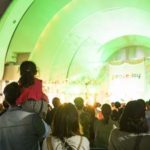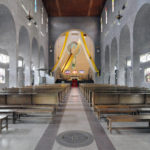Hiroshima Report 2023Column 2 An Inclusive Vision of Security for a World without Nuclear Weapons
Aditi Verma
We live in a world with over 12,000 nuclear weapons. While this number represents significant progress relative to the over 70,000 weapons during the peak of the cold war,1 there is a long way to go until we achieve zero. Reaching zero requires that we re-constitute definitions of security—to encompass not just national security but human and environmental security; that we identify problematic constructs and heuristics that enable and sustain nuclear weapons infrastructure, and de-emphasize them; that we understand the processes by which weapons are legitimized and examine the temporal validity of the justification of weapons technologies; and finally that we build the protocols for dismantlement into our norms, technologies, and institutions. All of this can only be made possible by opening up the field of security to new, more diverse voices and perspectives—people who have been impacted by the development, testing, and use of nuclear weapons, women, indigenous people and people of color, and people from the Global South. These still largely missing voices in the mainstream discussion which once incorporated into our thinking about the role of nuclear weapons in our world today are likely to lead to some significant shifts in perspective.
Here, I want to discuss two shifts in particular that might occur by opening up the field to missing voices: a reconceptualization of the relationship between technologies and society and a re-examination of the very notion of security.
Opening up the technological black box
Technologies, including nuclear weapons, are not apolitical. Instead, they are infused with the values and judgments of those who design and build them, as well as those who make policies concerning both design and development. Those who study technologies from a sociological, historical, and feminist perspective find time and time again that technologies are socially constructed.2 These researchers find that the early stages of technological development are characterized by a great deal of interpretive flexibility which vanishes from design records and oral narratives as a technology is “stabilized.”3 This process of stabilization often encodes inequitable decisions and injustices into the very designs of technologies. So when we come to view these technologies as objective and fixed, we also implicitly or explicitly accept these injustices.
In order to prevent this from happening we must stop thinking of technological designs as objective, fixed, unalterable and inevitable and instead develop a more complete and nuanced understanding of the organizational, institutional, cultural, and historic contexts in which technologies, including weapon technologies, are developed and embedded. We need to open the technological black box and subject the earliest stages of design, development, and policymaking surrounding these technologies to greater scrutiny.
Unsurprisingly perhaps, the inventors of nuclear weapons in the US—the individuals who conceptualized nuclear weapons and made decisions about the ways in which they would be destructive, have predominantly been men from the global north. Similarly, the very logic of deterrence, which in itself is a construct, was developed by economists, political scientists and physicists—also from the global north. This situation is problematic because these decisions have been made from a single, but narrow set of perspectives, and these decisions have been baked into the technologies and their institutional infrastructures and persist to this day. The perspectives of people who have been most impacted by or could be impacted by nuclear weapons have largely been missing from the mainstream thinking about the governance of this destructive technology. It is unsurprising then that even after significant reductions in the number of nuclear weapons since the height of the cold war, complete disarmament is viewed by many as a distant and unachievable objective.
Reimagining security
Making disarmament a tangible reality requires that we reimagine the very notion of global security and understand how nuclear weapons do or do not contribute to that security. Such an examination would reveal that nuclear weapons, even if contributing to the ‘security’ of some states, simultaneously create massive insecurities to many people and communities around the world.4
In the future, a more equitable version security might look something like this:
Nuclear security is defined not just as national security but as intersectional human and environmental security. Both temporal and physical scales of human experience and environmental impact are considered while conceptualizing security. Security is a working notion or definition that is reconsidered and re-evaluated periodically—through open fora, enabled by new media and community organizing approaches are used to revisit the very notion of security. Those who feel least secure can call for its redefinition.
Historic inequities embedded in the design prior technologies as well as those created by the use of technologies—including nuclear technologies, both weapons and energy—have been identified and repaired and inequities created by the development of new technologies are in an ongoing state of repair.
Technologies—of any scale—are designed for and with publics (the public is not a monolithic whole), including with the direct participation of communities where resources needed for the development of the technologies are extracted, the technologies will be sited and used, or where their wastes will be stored (over any time scale).
When creating new technologies we also consider, and intentionally plan for how the technologies will be dismantled, and the sites impacted by the development of the technology are remediated. Technology design and development will plan for the funding and financing of this work in addition to the work of designing the technology itself.
This list of a future more expansive and inclusive form of security is not exhaustive but I hope it serves as a starting point for conversation and reflection.
Aditi Verma: Assistant Professor of Nuclear Engineering and Radiological Sciences, University of Michigan
1 “Status of World Nuclear Forces,” Federation of American Scientists, https://fas.org/issues/nuclear-weapons/status-world-nuclear-forces/.
2 Pinch, Trevor J., and Wiebe E. Bijker. “The Social Construction of Facts and Artefacts: Or How the Sociology of Science and the Sociology of Technology Might Benefit Each Other.” Social studies of science, Vol. 14, No. 3 (1984) pp. 399-441.
3 Ibid.
4 For future detail, see, Katlyn M. Turner, Lauren J. Borja, Denia Djokić, Madicken Munk and Aditi Verma, “A Call for Antiracist Action and Accountability in the US Nuclear Community,” Bulletin of the Atomic Scientists, August 24, 2020, https://thebulletin.org/2020/08/a-call-for-antiracist-action-and-accountability-in-the-us-nuclear-community/






